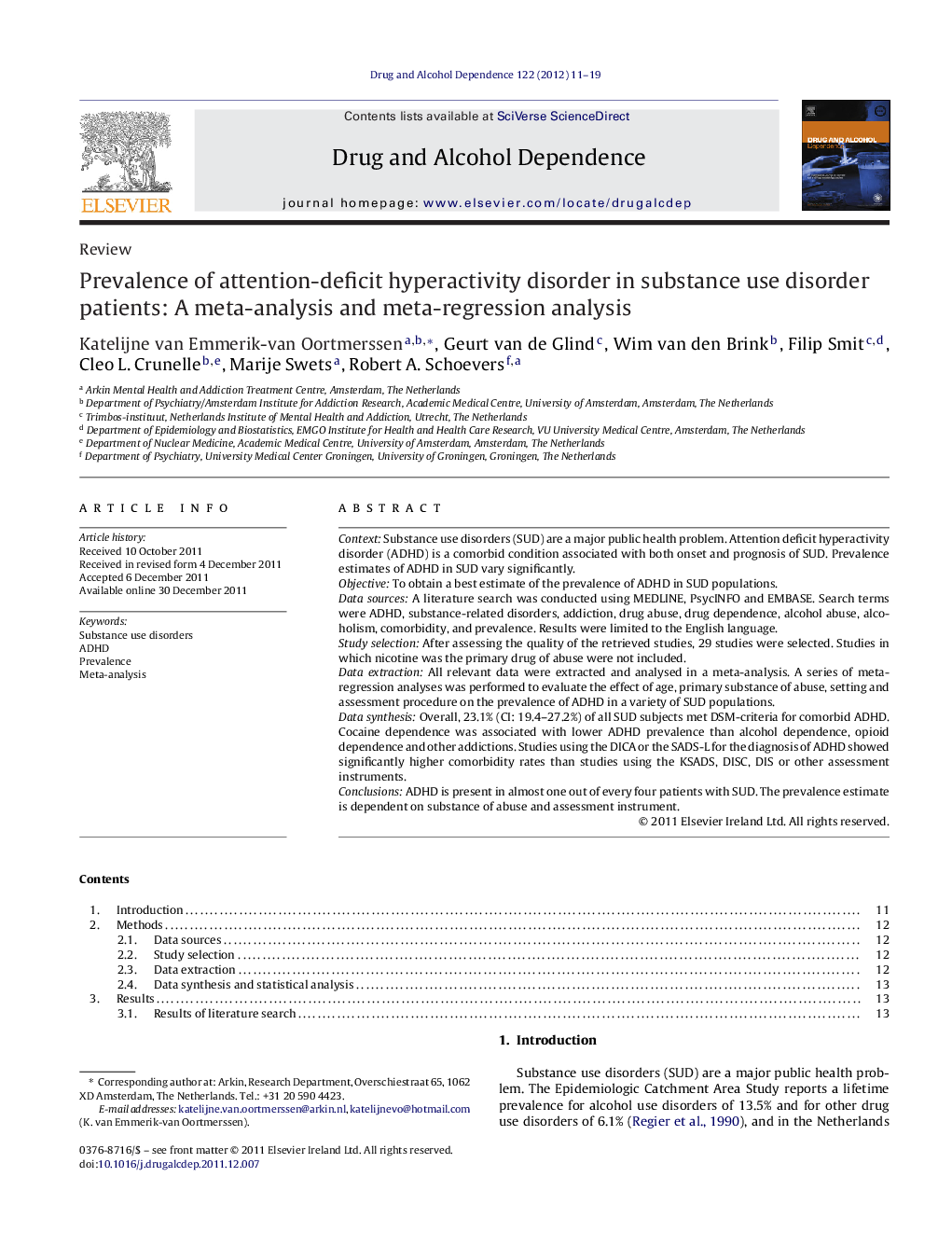| Article ID | Journal | Published Year | Pages | File Type |
|---|---|---|---|---|
| 1070135 | Drug and Alcohol Dependence | 2012 | 9 Pages |
ContextSubstance use disorders (SUD) are a major public health problem. Attention deficit hyperactivity disorder (ADHD) is a comorbid condition associated with both onset and prognosis of SUD. Prevalence estimates of ADHD in SUD vary significantly.ObjectiveTo obtain a best estimate of the prevalence of ADHD in SUD populations.Data sourcesA literature search was conducted using MEDLINE, PsycINFO and EMBASE. Search terms were ADHD, substance-related disorders, addiction, drug abuse, drug dependence, alcohol abuse, alcoholism, comorbidity, and prevalence. Results were limited to the English language.Study selectionAfter assessing the quality of the retrieved studies, 29 studies were selected. Studies in which nicotine was the primary drug of abuse were not included.Data extractionAll relevant data were extracted and analysed in a meta-analysis. A series of meta-regression analyses was performed to evaluate the effect of age, primary substance of abuse, setting and assessment procedure on the prevalence of ADHD in a variety of SUD populations.Data synthesisOverall, 23.1% (CI: 19.4–27.2%) of all SUD subjects met DSM-criteria for comorbid ADHD. Cocaine dependence was associated with lower ADHD prevalence than alcohol dependence, opioid dependence and other addictions. Studies using the DICA or the SADS-L for the diagnosis of ADHD showed significantly higher comorbidity rates than studies using the KSADS, DISC, DIS or other assessment instruments.ConclusionsADHD is present in almost one out of every four patients with SUD. The prevalence estimate is dependent on substance of abuse and assessment instrument.
